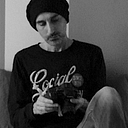How I edited a documentary during a pandemic. Remotely.
Covid-19 has changed our lives and has influenced various aspects of our everyday life, including the way we work, no doubt about it.
I often work for clients from abroad, so I’m used to smart working or remote working for years, so I set my workflow to this way of work that is not so popular here in Italy.
I’ve recently completed both the editing and grading of ‘The Spirit of Camden’, a twenty-eight minutes length documentary whose duration and the amount of footage have been the most challenging aspects of the project.
THE PROJECT
‘The Spirit of Camden’ is the first episode of ‘How Does It Sound?’, a documentary series, produced by the London agency Seven/Eight Studio, talking about the cities through the music, grassroots venues, and musicians’ personal stories. More details on the project website.
ORGANIZING FOOTAGE
Guided by the director Carlo Polisano, Benjamin Legget (DoP), Andrea Pasqua (first AD), Virginia Malavasi (filmmaker) and Holly Xue (filmmaker) filmed the documentary on various cameras: Canon C100, Canon 6D e Panasonic GH5.
As well as interviews and b-roll, filming was done during a concert held at the Spiritual Bar in London which was attended by the musicians involved in the project.
The documentary has been edited on Final Cut Pro X and using keyword collections to organize footage has been vital.
Firstly, I create some artist-based subgroups, and then I created other collections based on the documentary moments, for example, ‘Amy & The Calamities Live Performance’ includes the clips recorded during the live event, ‘Amy interview’ contains the interview footage and lastly ‘Amy Music’ includes artist after interview performance; I did the same for all the other artists.
Another subgroup is the one linked to the live event, which I called ‘Event B-Roll’ in which there are clips of off-stage musicians, images of the audience, and of the location and those of the musicians who performed during the open mic night.
In addition to these two subgroups there were also the keyword collections that I also use in less complex projects: ‘b-roll wide’, ‘b-roll medium’, ‘graphics’ etc. b-roll more suitable and useful to identifying the footage to be used in the various moments of the documentary, in which there is an alternation of interviews and live music.
THE EDITING
The documentary is structured in four chapters plus an intro and therefore I adapted the editing to the script of director Carlo Polisano, while as regards the storylines, in the primary I inserted intro and interviews, while in the secondary I inserted respectively ‘b-roll’ , ‘music’ (performances by musicians) and ‘soundtrack’, helping me in this with the ‘roles’ which, also visually, helped me to keep the main ‘project’, the one in which I edited the actual documentary, in order.
In addition to the ‘project’ containing the edited documentary, I have created others for the individual interviews, the teasers, and the trailer.
THE COLOR GRADING
The color grading initially had to be done on DaVinci Resolve, but given the improvements that Apple has made to the Final Cut color sector, I decided to continue working with the same software with which I made the editing, with the help of Filmconvert when it came to finishing the color with film grain.
As for the film look, I was inspired by the Fuji 3513 film, reducing the contrast and modifying the intensity and saturation of the yellows, reds, and oranges, while I gave a slight emphasis to the blue and celestial shades. For the black and white photos in the documentary, I used the Final Cut preset instead.
REVISIONS
As mentioned, I did the post-production of the documentary during the pandemic linked to Covid-19, furthermore the director Carlo Polisano lives in London while I live in Turin (Italy) so it was necessary to use an online platform such as Frame.io for revisions and editing notes, which I do very often as almost all of my works are commissioned from abroad.
FINAL THOUGHTS
Personally, this work, in addition to being creatively stimulating, has helped me to keep my mind busy in a complicated period such as that linked to Covid-19; furthermore, Final Cut proved to be an excellent workmate (both for editing and for color) and in particular, it was fundamental when it came to organizing the several hours of shooting.
As for ‘The Spirit of Camden’, the idea is to propose it around festivals, waiting for the new episode of ‘How Does It Sound’.
